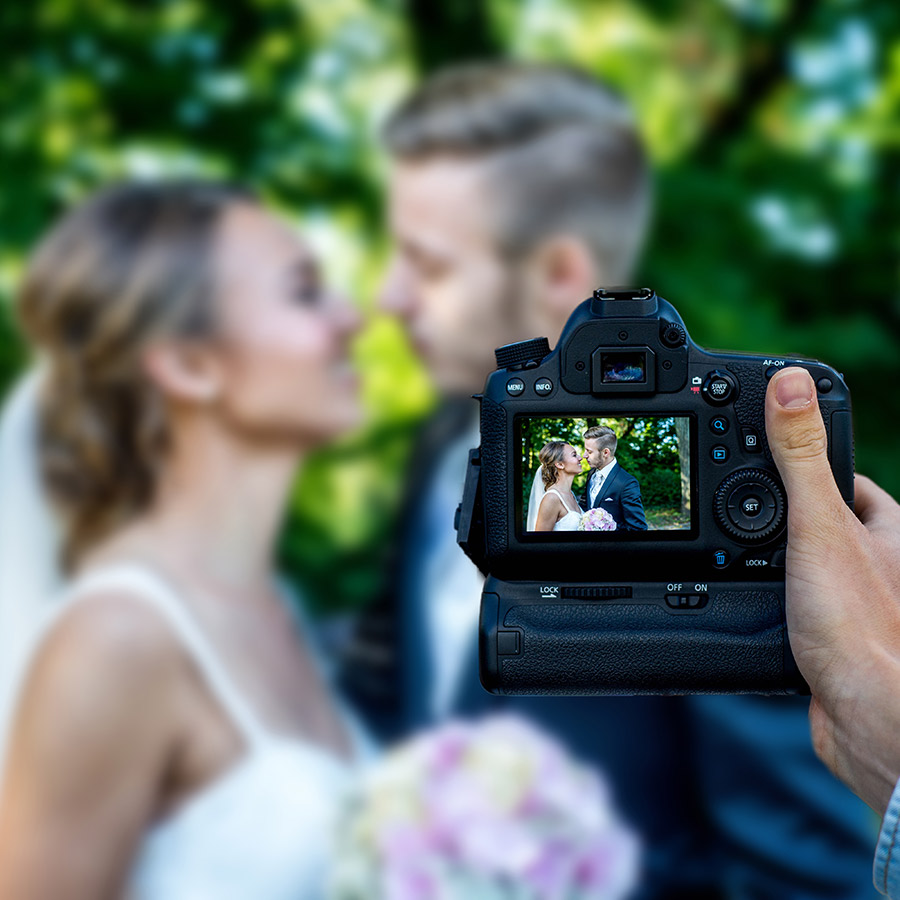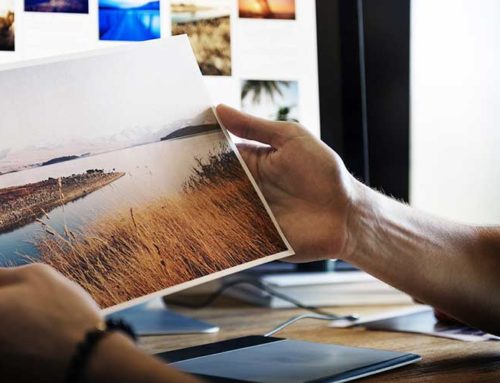19 Things You Need To Know About Becoming A Wedding Photographer
When two people fall in love and get married, they are going to need someone to be around to take high-quality, professional shots of the big day from as many different angles as possible.
Will that someone be you?
To become a successful wedding photographer, it is not enough just to be able to take great pictures. You also have to be able to look the part, and you will have to deal with anything out of the ordinary that may arise. With that in mind, these 19 tips should help make the big day easier for you and for the newlyweds.

- Estimate Your Costs First, and Base Your Price on Those
Creating wedding photography requires artistic skills, but it is a business, too, so you should treat it like one. Charge too little, and you end up not only losing money but undercutting the pros. Charge too much, and you price yourself out of a job. The best way to estimate how much you can reasonably charge is to add up the total costs and multiply them by three. However, when you are determining how much it is going to cost you, remember that the little things can add up.
If you need to buy or rent special equipment to get the shots you and your clients want, then you need to factor that into the equation. Presumably, you will already have professional grade equipment bought and paid for by now, since you are aiming for a clientele who can afford something better than what Uncle Bill and his cell phone camera can offer. In addition to that, remember to factor in transportation costs, such as gas to and from the wedding.
- Do Not Do it Alone, Especially Not For Your First Time
There is no way you can possibly handle everything without an assistant. If you do, then you are just asking for disaster. Having an assistant or a second shooter with you means you have an extra pair of hands to handle supplies and secondary shots while you handle the biggest parts of the wedding.
- Plan Everything as Far in Advance as Possible
Weddings require a great deal of planning to make sure every detail is just right and that everything and everyone is where they need to be when they need to be there. In that respect, photography is no different from any other aspect of the ceremony. Make sure you work with the wedding planner, the spouses-to-be, and their families to know as much as possible as when and where everything is supposed to take place. This gives you an opportunity to see the locations ahead of time so that you will have an idea of what to expect the day of the wedding.
- Have a Shot List Handy
There are several things, places, people, and moments at a wedding ceremony that the newlyweds are sure to want to see in pictures once it is over. Instead of just guessing and shooting arbitrarily, make sure you write down a shot list and stick to it. Make sure you ask the families who and what they want pictures of, and what priority they are. You do not want to miss a major part of the ceremony for something minor that has limited relevance to it.
- Ask the Families for Old Photos to Contribute
As a wedding photographer, you may be asked to do more than just take pictures of the event. You may also be asked to contribute something to show for the ceremony. You can ask the spouses’ families to contribute old photos to make into a video montage you can screen for guests. If you know how, then you can restore them if they are dirty, scratched, or faded. You should include this in your price because this is something else that will require time-consuming work.
- Don’t Get Battered For Not Having Enough Batteries
This is just common sense for all photographers, but it is even truer still for wedding photography. Little things such as batteries can make all the difference in the world. Invest in a large supply of rechargeable batteries and keep them charged as much as possible. Find a socket to recharge them when they are not in use.
- Check and Double Check Your Camera Settings Before Shooting
There is nothing worse than missing an important shot because your camera settings were wrong, the flash failed to go off, or the shot was underexposed, out of focus, or blurry. Using the manual settings may give you more control over the exposure and focus of the shot, but depending on how much movement there is, you may want to try one of the automatic options.
- Set Up a Portrait Space for Guests
You can help make the wedding reception fun and interactive by setting up a space at the reception hall where people can take portraits of themselves. All you need to do this is a backdrop, a photo printer that can print small pictures, and enough flashes to get a light that is even and flattering. Not only are instant portraits a great way for wedding guests to have something they can take home with them, but they are also a fun bonding experience for families with children if they are going to be there.
- Dress for the Occasion
If everyone else is going to dress formally, then so should you. Do not show up in jeans and a T-shirt when everyone else is wearing a tuxedo or a gown. Just try to blend in as much as possible without being obtrusive.
- Get Everything in Writing Up Front, Including the Cost
The married couple has a right to know what your capabilities are so that they do not end up expecting something you had never agreed to in the first place. Make sure they understand everything you can and cannot do, have everything they expect you to do written down, and make sure they at least pay a down payment first.
- Use Diffused Light as Much as Possible
Diffused light can take harsh, direct light and spread it around, making it appear softer. It also can make the light more flattering to human subjects. This is something you can do easily by putting a diffuser on your flash or by tilting it upward towards the ceiling if you are indoors. That is also one way to minimize the dreaded red eye effect, leaving you with one less thing to have to fix in post-production.
- Never, Ever, Ever Cut Corners on Insurance
In the event that something should go wrong that can prevent things from happening the way they planned, you have to make sure you are protected from any and all liability. For this reason, you need to have public liability insurance. Without it, you could be on the hook for a lot of money.
- Shoot in the RAW Format
This is the one the professionals use, and they use it because any and all alterations you make to the original are saved separately. Other formats, such as JPEG, override the originals every time you save them unless you save them as a copy. RAW is also compatible with professional grade software, such as Adobe Photoshop and Adobe Lightroom.
- Stock Up on Memory Cards
Since the RAW format uses up the greatest amount memory compared to lower quality formats, they are more likely to make memory cards fill up faster. Make sure you have enough of them to cover an entire day’s shooting schedule for multiple cameras. If you need to buy more, then go ahead and do it rather than lose important shots because you ran out of memory.
- Synchronize Time Between You and Your Second Shooter
When you and your second shooter are ready to start shooting, make sure your watches, ell phones, and cameras are all synchronized to the same time. The more rigid the wedding’s schedule, the greater the incentive there is for being on time. Otherwise, you might show up for the ceremony five to ten minutes before your second shooter does!
- Go For Quality Over Quantity When Shooting
Since a wedding can last half a day or more when you take into account all the preparation before it and all the cleanup after it, that gives you plenty of time to slow down, relax, and compose your shots with thought and care.
- Do Not Miss The Rehearsal
While the photography of the main ceremony itself is the most important thing, it is still important for you to show up at the rehearsal the night before. That way, you will know how everything is supposed to play out the next day. You can also use this time to take shots of minor details, leaving the actual wedding day free for the big things.
- Show Off Your Style In Lightroom
The great thing about Adobe Lightroom is how versatile it is. Its numerous presets allow you to change the style of the picture in a lot of different ways. Work with the couple before hand to show what you can do, and what kind of options they have. You might be surprised; they may end up wanting something a little less conventional, but no less thematically appropriate.
- Do Not Rely on Photoshop to Fix Mistakes Unless Absolutely Necessary
Photoshop is great for manipulating pictures after the fact, but you should never use it as a crutch. For instance, for using it to clean up dirt and dust instead of cleaning the camera and lenses. Take as much time as necessary to get the shot right in camera so you can minimize the amount of post-production work you have to do later.
Conclusion
Before you say “I do” to a client, make sure you follow these easy-to-remember tips first. Turning these tips into habits can make the difference between good photos and great photos, and you are sure to create stunning wedding photography that both spouses will surely cherish for years to come. Now that you know what to expect from being a wedding photographer, you can go into your first job feeling comfortable about knowing what to do. For more tips on what it takes to be a wedding photographer, subscribe to this weekly newsletter.






